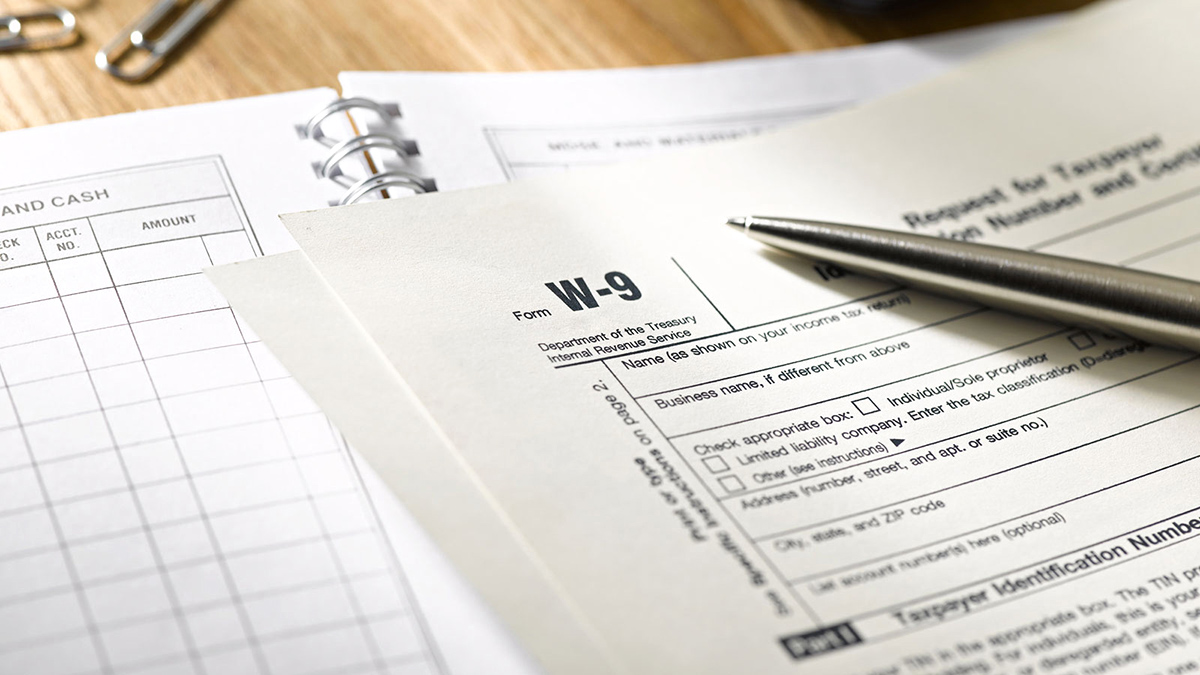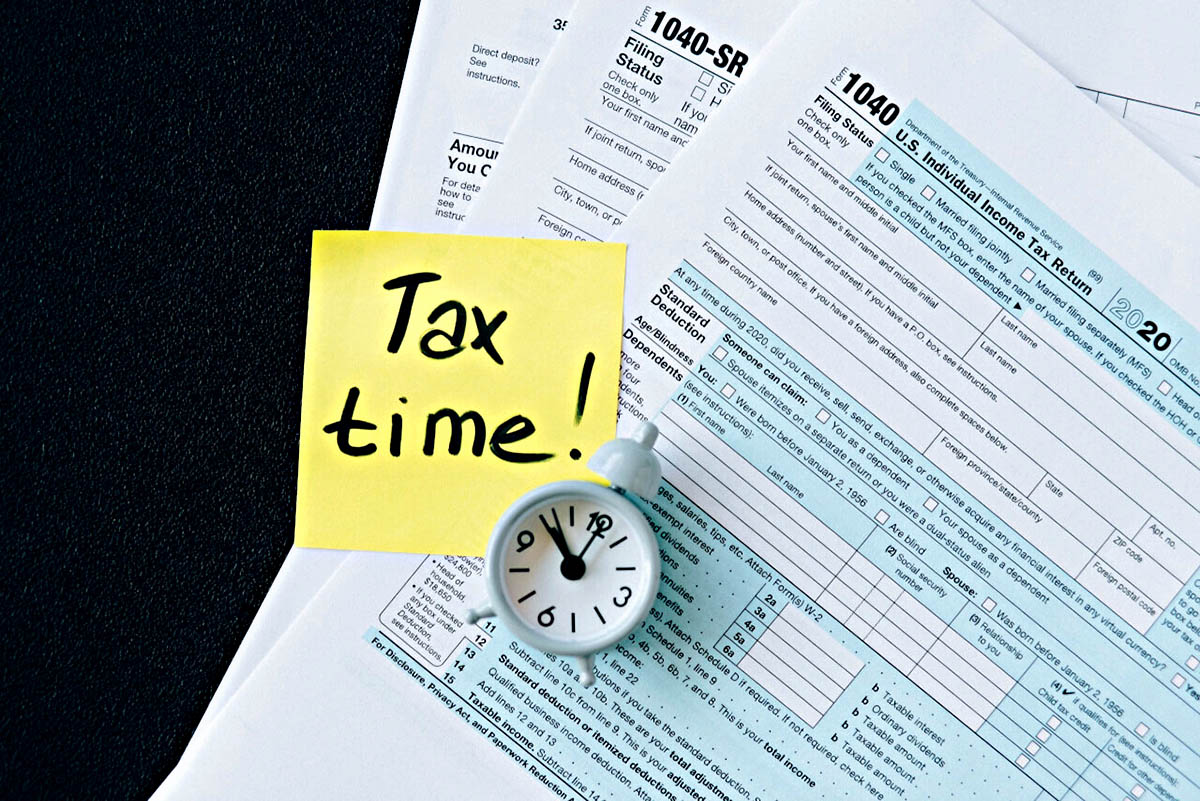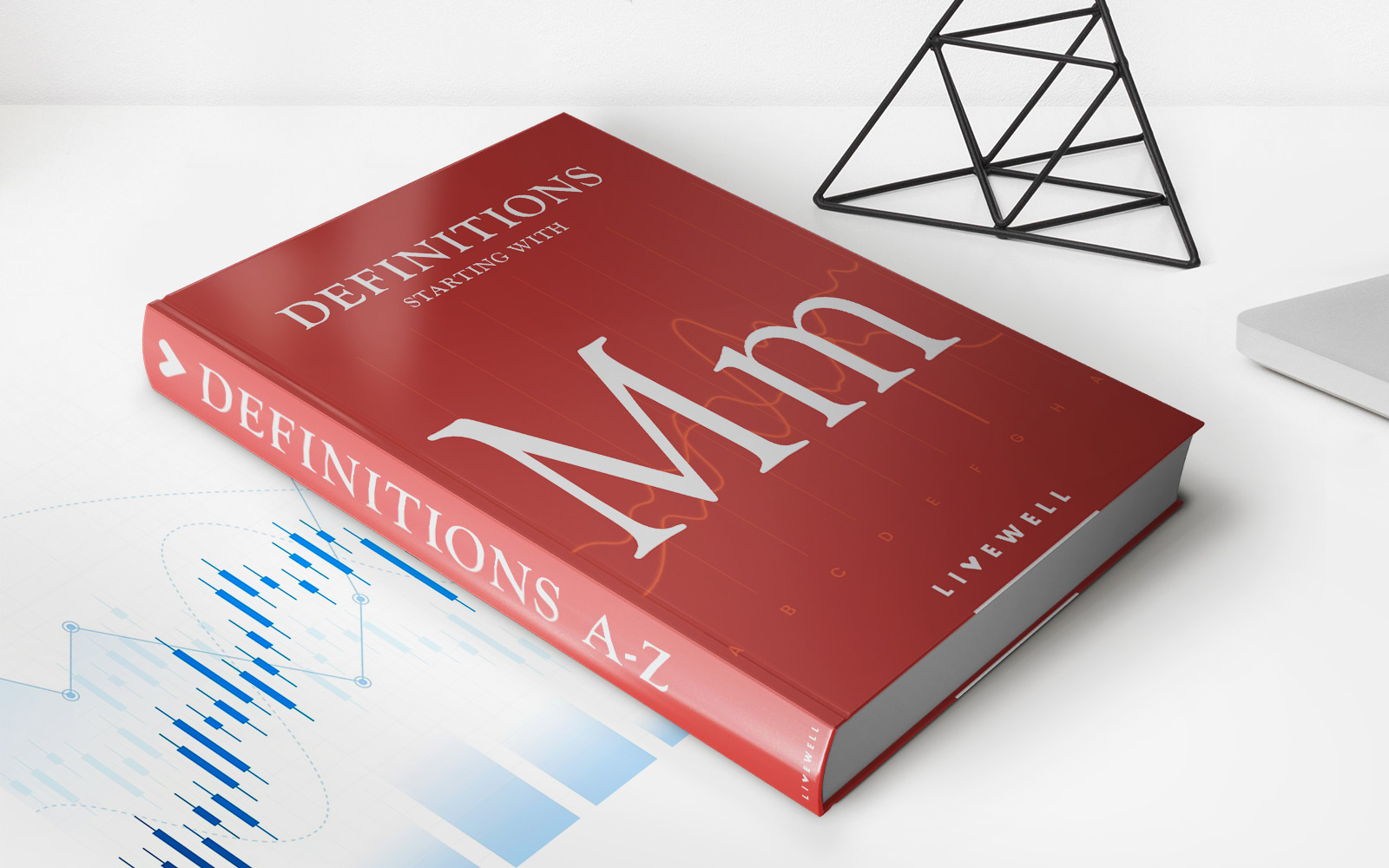

Finance
What Tax Bracket Is $50,000 A Year
Published: January 20, 2024
Find out which tax bracket $50,000 a year falls under in this comprehensive finance guide. Maximize your understanding of personal finance
(Many of the links in this article redirect to a specific reviewed product. Your purchase of these products through affiliate links helps to generate commission for LiveWell, at no extra cost. Learn more)
Table of Contents
Introduction
When it comes to personal finance, understanding your income tax is crucial. Tax brackets play a significant role in determining how much you owe to the government each year. If you’re earning $50,000 per year, you might be wondering what tax bracket you fall into.
Before we delve into the specifics, let’s start with a brief definition of tax brackets. Tax brackets are ranges of income that determine the rate at which your income is taxed. The tax system is progressive, which means that as your income increases, so does the percentage of your income that is taxed.
To grasp the concept of tax brackets, it’s important to have a general understanding of income tax. Income tax is the amount of money that individuals and businesses are required to pay on their earned income. This tax is then used by the government to fund various public services and programs.
To calculate your income tax, you first need to determine which tax bracket you fall into based on your annual income. Each tax bracket has its own corresponding tax rate. The tax rates increase gradually as you move up the income ladder.
Now, let’s explore what tax bracket $50,000 falls into and the implications it may have on your financial situation.
Definition of Tax Brackets
Tax brackets are ranges of income levels that determine the rate at which individuals or businesses are taxed. In other words, they categorize different income levels and assign a specific tax rate to each category. The tax system is designed to be progressive, meaning that as income increases, the tax rate also increases.
For example, a tax bracket may have a range of $0-$50,000, with a tax rate of 10%. This means that any income within this range would be subject to a 10% tax rate. As income increases and moves into the next bracket, the tax rate may increase to 15% or higher.
It’s important to note that tax brackets are not applied to your entire income. Instead, they apply to different portions of your income. This is known as marginal tax rates. For instance, if you fall into the 25% tax bracket and earn $50,000, the first portion of your income will be taxed at a lower rate, such as 10%. The subsequent portions of your income will be taxed at higher rates, according to the tax bracket you fall into.
The purpose of tax brackets is to create a fair and progressive tax system based on the ability to pay. People with higher incomes are required to pay a higher percentage of their income in taxes, while those with lower incomes are taxed at a lower rate. This ensures that the burden of taxation is distributed in a way that accommodates varying income levels and promotes economic equity.
Understanding tax brackets is essential for financial planning, as it allows individuals and businesses to estimate their tax liability and make strategic decisions to minimize their taxes legally. By knowing which tax bracket you fall into, you can take advantage of deductions and credits to reduce your taxable income and optimize your tax situation.
Overview of Income Tax
Income tax is a fundamental component of the tax system in most countries. It is a tax imposed on individuals, corporations, and other entities based on the income they earn. The income tax collected by the government is used to fund public services, infrastructure, and various government programs.
The income tax system typically operates on a fiscal year basis, with individuals and businesses required to report their income and pay taxes annually. The tax calculation is based on the principle of taxable income, which is the amount of income earned after deductions and exemptions.
Income includes earnings from various sources, such as employment, self-employment, rental income, dividends, capital gains, and more. Different types of income may be subject to different tax rates or may qualify for specific deductions or exemptions.
To determine taxable income, individuals and businesses need to report their income and deduct allowable expenses and deductions. This includes expenses related to business operations, education, medical expenses, mortgage interest, charitable contributions, and more. The remaining income after deductions is then subjected to the applicable tax rates based on the respective tax brackets.
Income tax rates can vary significantly depending on the country, state, or province. In many countries, income tax rates are progressive, meaning that the tax rate increases as income levels rise. This progressive structure ensures that individuals with higher incomes contribute a larger percentage of their earnings to taxes compared to those with lower incomes.
It’s important to note that income tax is not a flat rate applied to the entire income. Instead, it uses a tiered system, with different portions of income falling into different tax brackets, each with its own tax rate. The progressive nature of income tax allows for a fair distribution of the tax burden across society.
Income tax also provides certain benefits and incentives to individuals and businesses. These can include tax credits for specific activities or expenses, deductions for retirement contributions or healthcare expenses, and various tax incentives designed to stimulate economic growth and investment.
Understanding the basics of income tax is essential for financial planning and compliance. By knowing the tax rates, deductions, and credits applicable to your income, you can effectively manage and optimize your tax liability while staying within the framework of the tax laws.
Determining Tax Bracket Based on Income
Determining your tax bracket is essential to understanding how much income tax you will owe to the government. It is based on your annual income and helps you determine the applicable tax rate and the amount of tax you are required to pay.
The tax brackets themselves are determined by tax laws established by the government. These laws outline the income ranges and corresponding tax rates for each bracket. Tax brackets are typically adjusted annually to account for inflation and changes in the economy.
To determine your tax bracket, you need to calculate your taxable income. Taxable income is your total income after deductions and exemptions. This includes income from various sources such as wages, self-employment earnings, rental income, interest, dividends, and capital gains.
Once you have your taxable income calculated, you can compare it to the income thresholds for each tax bracket. Each tax bracket has a specific range of income and a corresponding tax rate. Your taxable income will fall into the bracket that corresponds to the range it lies within.
For example, if you earn $50,000 annually, you would compare that income to the income ranges for each tax bracket. Let’s say the first tax bracket is $0-$50,000 with a tax rate of 10%, the next bracket starts at $50,001 with a higher tax rate of 15%. In this scenario, you would fall into the first tax bracket and be subject to a 10% tax rate.
It’s important to note that tax brackets are progressive. This means that as your income increases, the portion of your income that falls into each higher tax bracket will be taxed at a higher rate. Understanding this helps you anticipate how additional income may affect your overall tax liability.
Calculating your tax bracket and understanding where your income falls in the tax structure allows you to estimate your tax liability accurately. It also helps you plan and make informed financial decisions throughout the year to optimize your tax situation, such as taking advantage of deductions and credits or considering income-shifting strategies.
Keep in mind that tax laws and brackets can change over time, so it’s essential to stay informed of any updates to ensure accurate tax planning and compliance with the current regulations.
Tax Bracket for $50,000 Annual Income
If you’re earning $50,000 per year, you may be wondering which tax bracket you fall into. The answer depends on the specific tax rates and income thresholds set by your government. Let’s explore a hypothetical example to determine the tax bracket for $50,000 of annual income.
Keep in mind that tax brackets can vary depending on the country, state, or province you reside in. For the purpose of this example, let’s assume a simplified tax bracket structure with three brackets:
- Bracket 1: $0 – $20,000 with a tax rate of 10%
- Bracket 2: $20,001 – $50,000 with a tax rate of 15%
- Bracket 3: $50,001 and above with a tax rate of 20%
In this scenario, your $50,000 income falls into the second tax bracket, which has a tax rate of 15%. This means that the first $20,000 of your income would be taxed at a lower rate of 10%, and the remaining $30,000 would be taxed at the higher rate of 15%.
It’s important to note that not all of your income is subject to the highest tax rate. The progressive nature of tax brackets means that different portions of your income are taxed at different rates within their respective brackets.
So, if we do the math, your total tax liability for a $50,000 income in these hypothetical tax brackets would be:
(10% * $20,000) + (15% * $30,000) = $2,000 + $4,500 = $6,500
Therefore, for an annual income of $50,000, you would owe $6,500 in income tax based on this simplified tax bracket structure.
It’s important to remember that this example is for illustrative purposes only. The actual tax rates and income brackets may differ based on your specific location and tax laws. It is always recommended to consult with a tax professional or refer to the official tax guidelines in your country or jurisdiction to determine your accurate tax liability.
Understanding your tax bracket helps you plan your finances and make informed decisions when it comes to saving, investing, and managing your money. By knowing the tax implications of your income level, you can better prepare for your tax obligations and take advantage of any available deductions or credits to optimize your tax situation.
Implications of Being in the $50,000 Tax Bracket
Being in the $50,000 tax bracket can have several implications on your overall financial situation. Understanding these implications can help you make informed decisions and effectively manage your finances. Let’s explore some of the key implications of being in this tax bracket:
- Tax Liability: The first and most obvious implication is the tax liability you will face. As per the tax bracket structure and rates applicable to your income, you will owe a certain amount of income tax. It’s crucial to accurately calculate your tax liability to ensure that you are setting aside sufficient funds to meet your tax obligations.
- Marginal Tax Rate: When you’re in the $50,000 tax bracket, it’s important to understand your marginal tax rate. The marginal tax rate is the percentage of tax you pay on each additional dollar of income earned within that bracket. Knowing your marginal tax rate can help you evaluate the financial impact of earning more income or receiving bonuses or additional compensation.
- Impact on Disposable Income: Being in a higher tax bracket means that a larger portion of your income will go towards taxes. This can impact your disposable income, which is the amount of money you have left after taxes to spend or save. It’s important to budget wisely and manage your expenses carefully to ensure your financial well-being.
- Tax Planning Opportunities: As someone in the $50,000 tax bracket, you may have various opportunities for tax planning. This includes strategically using deductions, credits, and other tax-saving strategies to minimize your tax liability. Consider consulting with a tax professional who can help you identify applicable tax breaks and make the most of your financial situation.
- Eligibility for Certain Programs: Being in the $50,000 tax bracket may impact your eligibility for certain government programs or benefits. Some programs have income eligibility thresholds, and exceeding those thresholds could affect your eligibility. It’s important to be aware of any implications on programs like healthcare subsidies, education grants, or other income-based assistance programs.
- Planning for Retirement: Being in this tax bracket offers an opportunity to consider retirement planning. You may be eligible for retirement plans such as an employer-sponsored 401(k) or an individual retirement account (IRA), which can provide tax advantages. Taking advantage of these retirement planning options can help you save for the future while potentially reducing your current taxable income.
Understanding the implications of being in a specific tax bracket empowers you to make informed decisions and take advantage of available opportunities. Be sure to consult with a financial advisor or tax professional to explore tax-efficient strategies and optimize your financial situation.
Tips for Managing Taxes in the $50,000 Tax Bracket
Being in the $50,000 tax bracket means that you have the opportunity to optimize your tax situation and potentially reduce your tax liability through careful planning and strategic decisions. Here are some tips to help you effectively manage your taxes:
- Take Advantage of Deductions: Explore the available deductions that you qualify for and ensure that you claim them. Common deductions include mortgage interest, student loan interest, medical expenses, and charitable contributions. Keeping track of your eligible expenses and maximizing your deductions can reduce your taxable income.
- Consider Tax Credits: Look for tax credits that you may be eligible for, such as the Earned Income Tax Credit (EITC), child tax credit, or educational credits. Tax credits directly reduce your tax liability, so take the time to research and determine if you qualify for any credits.
- Contribute to Retirement Accounts: Consider contributing to retirement accounts such as a 401(k) or an IRA. Contributions to these accounts are often tax-deductible, reducing your taxable income. Additionally, you can take advantage of potential tax-deferred growth within these accounts.
- Be Mindful of Investment Gains and Losses: If you have investments, pay attention to capital gains and losses. When selling investments, consider the tax implications of short-term and long-term capital gains. Timing your investment sales strategically can help offset gains with losses and potentially reduce your overall tax liability.
- Review Health Savings Account (HSA) Options: If you have a high-deductible health plan, consider opening a Health Savings Account (HSA). Contributions to an HSA are tax-deductible, and withdrawals, when used for qualified medical expenses, are tax-free. Take advantage of this tax-advantaged account to manage your healthcare expenses and potentially reduce your taxable income.
- Maintain Good Recordkeeping: Keep organized records of your income, expenses, receipts, and any relevant documentation for tax purposes. Good recordkeeping ensures that you have the necessary documentation in case of an audit and allows you to accurately report your income and claim deductions or credits.
- Consult with a Tax Professional: If you’re unsure about the tax implications of your specific situation or need guidance in optimizing your tax planning, seek the advice of a tax professional. They can provide personalized recommendations and ensure that you’re taking advantage of all applicable tax strategies.
Remember, tax planning and management is an ongoing process. Stay informed about changes in tax laws and regulations that may impact your tax situation. By implementing these tips and staying proactive with your tax planning efforts, you can effectively manage your taxes in the $50,000 tax bracket and maximize your financial well-being.
Conclusion
Understanding your tax bracket and managing your taxes is an essential part of personal finance. If you find yourself in the $50,000 tax bracket, it’s important to be aware of the implications and take steps to optimize your tax situation.
By understanding how tax brackets work and knowing the tax rates applicable to your income, you can accurately calculate your tax liability and plan your finances accordingly. Being mindful of your marginal tax rate and its impact on your overall income can help you make informed decisions about earning additional income or receiving bonuses.
Utilizing strategies such as taking advantage of deductions and tax credits, contributing to retirement accounts, and being aware of investment gains and losses can help reduce your taxable income and potentially lower your tax liability.
Remember that tax laws and regulations can change over time, so staying updated and consulting with a tax professional can help ensure that you are aware of any new opportunities or requirements that may impact your tax planning.
Effectively managing your taxes in the $50,000 tax bracket not only helps you minimize your tax liability but also allows you to allocate your financial resources more efficiently. By optimizing your tax situation, you can enhance your financial stability, save for the future, and work towards achieving your long-term financial goals.
Take the time to educate yourself about tax laws and explore the various tax planning opportunities available to you. With careful planning and a proactive approach, you can navigate the tax system with confidence and ensure that you are maximizing your financial well-being in the $50,000 tax bracket and beyond.














